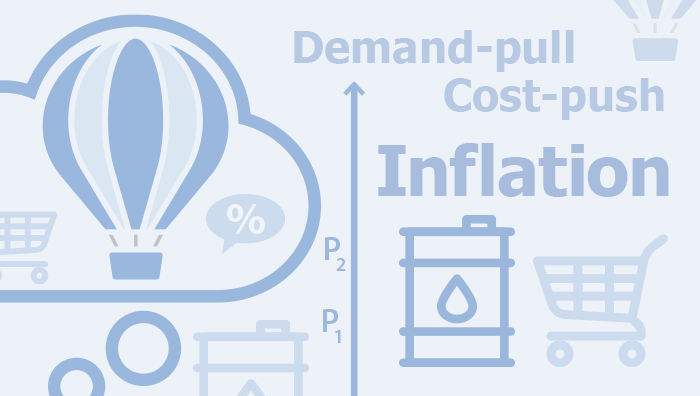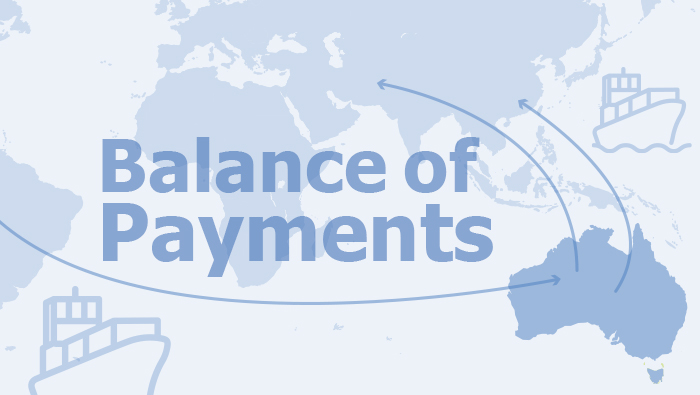December 2022
- Download the complete Bulletin December 2022 4.5MB

HC Coombs: Governor of Australia's Central Bank 1949–1968
Dr HC Coombs was Governor of Australia’s central bank for nearly 20 years. His appointment followed significant roles in Australia’s war-time administration and post-war reconstruction, where he was an architect of Australia’s international full employment policy, known as the ‘Positive Approach’. When appointed Governor of the central bank in 1949, Coombs remained committed to the pursuit of full employment. Influenced by Keynes, he sought to maintain aggregate demand and supply in ‘reasonable balance’, something the Reserve Bank continues to do today. After retiring from the Bank in 1968, Coombs continued to promote the arts in Australia and the rights and welfare of First Nations Australians. He became a senior adviser to the Whitlam Government and chaired the Royal Commission on Australian Government Administration – a fitting conclusion for someone often described as the nation’s greatest public servant. This article considers the life and career of HC Coombs, and complements the series of records that have been released on Unreserved.

Economic Literacy: What Is It and Why Is It Important?
One of the core objectives of the Reserve Bank’s public education program is to improve economic literacy. While the social benefits of economic literacy are well established, defining what is meant by this term is not straightforward and has been the subject of debate over many decades. This article explores the meaning of ‘economic literacy’. To arrive at a working definition, it discusses the economic principles that should be understood for someone to be considered economically literate, along with the topics they should be familiar with and the ways of thinking that we would expect them to display. In doing so, it distinguishes between economic and financial literacy. The article concludes by posing questions for future research on how economic literacy in Australia might be measured and how it might be supported.

The Recovery in the Australian Tourism Industry
The Australian tourism industry is gradually recovering from the COVID-19 pandemic that brought global travel to an unprecedented standstill. International tourism fell sharply in early 2020 and has only slowly recovered since restrictions were lifted in the first half of this year. By contrast, domestic tourism spending bounced back quickly as local restrictions eased and is now above pre-pandemic levels. This article outlines the recovery in the Australian tourism industry following the pandemic, the challenges the industry has faced in reopening, and the uncertainties around the outlook for the tourism industry over the next few years.

New Measures of Financial Stress from Non-traditional Data
Household and business financial stress has significant implications for financial stability and monetary policy. However, high-frequency and timely indicators of emerging signs of financial stress are not readily available. To address this information gap, the Reserve Bank has developed novel measures of financial stress based on news, search and social media data. This article describes these new metrics and how they can capture meaningful changes in financial conditions and, in some cases, predict traditional measures of financial stress, such as loan arrears. Going forward, these indices will continue to be monitored for early signs of financial difficulties.

Stablecoins: Market Developments, Risks and Regulation
Stablecoins – a type of crypto-asset designed to maintain a stable value – have grown in popularity over recent years. Market developments, however, have highlighted the risks stablecoins can pose to investors, particularly if they are not fully backed by high-quality liquid assets. Stablecoins currently pose limited risks to the broader Australian financial system, but this could change if they become more widely used in the future – for example, in payments and other financial services. As such, regulators across the world are seeking to bring greater clarity to the regulatory treatment of stablecoins, not only to manage risks but also to support innovation in the market. This article considers the rise of stablecoins, the risks they pose and the response of regulators so far.

The RBA and AOFM Securities Lending Facilities
Australian Government Securities (AGS) play an important role in the transmission of monetary policy given that yields on these securities provide a benchmark for other interest rates across the economy. The Bank has a large amount of AGS and ‘semi-government’ bonds issued by state and territory borrowing authorities (semis) on its balance sheet as a result of purchases to support the economy through the COVID-19 pandemic. To support the efficient functioning of these markets, the Bank operates a securities lending facility (SLF) from which eligible counterparties can borrow AGS and semis; the Bank also operates an SLF on behalf of the Australia Office of Financial Management (AOFM). The use of these SLFs picked up noticeably following the end of the Bank’s yield target and bond purchase program. This article discusses these facilities in detail, including why market participants might use them and the recent increase in borrowing.
September 2022
- Download the complete Bulletin September 2022 8.7MB

The Reserve Bank's Liaison Program Turns 21
In 2001, the Reserve Bank established its liaison program – a formal program of economic intelligence gathering, through which Bank staff meet frequently with firms, industry bodies, government agencies and community organisations. The program is systematic in its approach to collecting and assessing information, and the intelligence obtained is a useful complement to published sources of data and economic models in informing the Bank's assessment of economic conditions. In addition, the information gathered is available in near real time, making it useful for ‘nowcasting’ and understanding the implications of short-term shocks to the economy. This article looks at the process of liaison, the nature of the information collected and how it has been used over its 21 years of operation.

The Current Climate for Small Business Finance
Economic conditions for small and medium enterprises (SMEs) have been relatively strong since the second half of 2021, and demand for business finance is high. However, the environment remains challenging and uncertain, and interest rates on loans for SMEs are rising from historical lows. Small businesses continue to report that accessing funding through banks is a challenge, although new lenders and products are providing alternative sources of finance. The article considers these recent developments, drawing in particular on the discussions of the Small Business Finance Advisory Panel, which met in July this year.

The Cost of Card Payments for Merchants
The average cost for a merchant to accept a card payment has declined over recent years. However, consumers are making more payments with cards than ever before, which is raising total payment costs for merchants. Smaller merchants also face notably higher card payment costs per transaction than larger merchants. To strengthen competition and help reduce the cost of accepting card payments, the Reserve Bank wants all merchants to be able to choose which card network is used to process debit transactions – a functionality known as least-cost routing (LCR). While considerable progress has been made, the payments industry has more work to do to provide and promote LCR. The Bank is taking further action to ensure that LCR will be available for all merchants.

Trends in Australian Banks' Bond Issuance
Bonds account for around 10 per cent of Australian banks' funding, and bonds issued by banks account for about half of the non-government bond market. The Australian bank bond market is primarily driven by the five largest banks, which issue most of the banks' bonds. This article explores trends in Australian banks' senior unsecured bond issuance since the global financial crisis. The COVID-19 pandemic, and the policies implemented in response, significantly influenced bank bond issuance. In particular, banks' bond issuance declined for a period as they accessed funds through the Reserve Bank's Term Funding Facility; however, issuance has increased recently as the economy has recovered from the initial phase of the pandemic.

Sentiment, Uncertainty and Households' Inflation Expectations
High inflation expectations can have significant consequences for the economy as a whole, and can become self-reinforcing. It is therefore noteworthy that inflation expectations of Australian households are persistently higher than actual inflation. This is partly because when consumers are more uncertain about the economy, they tend to report their inflation expectations in round multiples of 5 per cent, which is higher than inflation has averaged over recent decades. In addition, there is a negative relationship between consumer sentiment and inflation expectations. This article examines the relationship between sentiment, uncertainty and households' inflation expectations in Australia, and considers how this uncertainty might be addressed. It suggests that targeted and clear communication about inflation can help to reduce uncertainty and provide consumers with a better understanding of the path of future inflation.

Wage-price Dynamics in a High-inflation Environment: The International Evidence
Headline inflation is at multi-decade highs in most advanced economies, reflecting a confluence of factors. Wages growth has also increased, but not to the same extent. This article examines the risk that a wage-price spiral could emerge in these economies by looking at historical experience and the various factors that could make a spiral more likely. It finds that the current episode has many differences to the 1970s, when a wage-price spiral did emerge. Central banks are now focused on ensuring inflation remains low, medium-term inflation expectations remain anchored and structural changes in the labour market reduce the likelihood that wages and inflation chase each other. Nonetheless, authorities need to be mindful of the risk of a wage-price spiral.

Evolving Financial Stress in China's Property Development Sector
Financial stress in China's property development sector has attracted significant attention because it may have systemic consequences for financial stability in the broader Chinese economy. Though China Evergrande Group, one of the country's largest and most leveraged property developers, has received a considerable share of this attention, risks in the sector were building for some time prior to Evergrande's default in 2021. This article reviews contributing factors to the sector's financial fragility and explores the characteristics of the financial stress faced by major developers. It also considers some likely consequences of this fragility for the Chinese property development sector and beyond.
June 2022
- Download the complete Bulletin June 2022 9.1MB

What Can You Do With Your Damaged Banknotes?
Through the Reserve Bank's damaged banknote claims service, members of the public can ask for their damaged banknotes to be assessed and the value redeemed. Removing poor-quality banknotes also supports the Bank's aim of ensuring that the public has confidence in Australian banknotes as a means of payment and a secure store of wealth. This article provides an overview of the service, its key users and the circumstances in which claims are lodged. While the value of the majority of claims is relatively low, claims containing banknotes damaged in storage can be significant, reflecting the role of cash as a secure store of wealth.

Recent Trends in Banknote Counterfeiting
Counterfeiting of Australian banknotes is approaching its lowest level in a decade. Several factors are playing a role in this decline, including fewer transactions being made with cash, COVID-19-induced lockdowns, the rollout of a new banknote series with upgraded security features, and law enforcement continuing to interrupt counterfeiting operations. This article quantifies the effect of some of these factors, while exploring the broader trends in banknote counterfeiting.

Job Mobility in Australia during the COVID-19 Pandemic
The COVID-19 pandemic has led to large disruptions to the Australian labour market. Initially, workers were less likely to change jobs because of the uncertain economic environment, the decrease in advertised jobs and the JobKeeper program that helped workers remain attached to their employers. More recently, job mobility has increased as workers have caught up on planned job changes or been encouraged by the strong labour market to change jobs, particularly in high-skilled roles experiencing strong labour demand. This article reviews developments in job mobility in Australia through the pandemic, and compares these outcomes to other advanced economies. It also examines the potential implications for wages; a high rate of job mobility tends to be associated with higher wages growth in a tight labour market, as employers in sectors with high demand for labour compete for new staff or raise wages to retain staff.

First Nations Businesses: Progress, Challenges and Opportunities
Australia's First Nations business sector is growing at a pace of around 4 per cent per year, fuelled by growing demand. However, many budding First Nations entrepreneurs still face substantial barriers to establishing a successful business. This article discusses the need to develop trust for effective policy environments that support First Nations businesses, and describes how ongoing challenges of access to financial, social and symbolic capital continue to test First Nations business owners. Despite this, there are opportunities for First Nations businesses in the forms of Indigenous preferential procurement policies, and First Nations-specific business development programs as well as financial products and services. It is not yet clear how effective the policy environment is in addressing access and discrimination challenges, nor how widespread the benefits are to First Nations businesses. As such, the article concludes by discussing the role of data development for accountability.

Household Liquidity Buffers and Financial Stress
The ratio of household liquid assets to household income in Australia has increased substantially over recent decades, at both the aggregate and individual household levels. The increase in buffers has been most pronounced for households with mortgage debt and among indebted households – with those with the most debt typically holding the highest liquidity buffers. This is important from a financial stability perspective as liquidity buffers allow households to smooth their spending and maintain their debt payment obligations in the event of adverse shocks to their cash flows; as such, they are a key factor in reducing household financial stress. This article considers these trends and finds that, to the extent that rising liquidity buffers have increased household financial resilience, the risks associated with high and rising household indebtedness are unlikely to be as great as suggested by focusing on gross debt-to-income ratios alone.

An International Perspective on Monetary Policy Implementation Systems
In response to the COVID-19 pandemic and building on policies introduced during the global financial crisis, central banks in advanced economies deployed balance sheet policies to support their economies and address disruptions to the smooth functioning of financial markets. The introduction of these policies has changed how most of these central banks implement their primary policy tool – the policy rate. This article describes how many central banks transitioned from a corridor system of monetary policy implementation to a de facto floor system. It also details the range of implications of choosing a floor system. While this transition may prove to be temporary for some central banks, others have signalled that they expect to retain a floor system in the long term.

Bank Fees in Australia
This article updates previous Reserve Bank research on bank fees charged to Australian households, businesses and government. Since 2021, improved data on the fees charged by banks have been available from the new Economic and Financial Statistics collection, which replaced the survey on banks' fee income undertaken annually since 1997 by the Reserve Bank. The new data suggest that the overall fees charged by banks declined in 2021. This decline was broadly based across different categories, although total fees charged on loans (excluding personal lending) increased moderately, in part reflecting the higher volume of lending activity.

Fallbacks for BBSW Securities
The bank bill swap rate (BBSW) is an important short-term benchmark interest rate for Australian financial markets across various maturities. It is a robust benchmark based on a liquid market. However, it is possible that, at some point in the future, BBSW might no longer be robust. Market participants need to be prepared for the possibility that BBSW, or at least some BBSW tenors, cease to be published. To do so, participants should include a ‘robust, reasonable and fair’ fallback to another interest rate in their financial contracts. To promote appropriate use of fallbacks, the Reserve Bank will only accept securities referencing BBSW issued after 1 December 2022 as collateral in its domestic market operations if those securities include such a fallback. The article explains this change and how participants can prepare for the contingency of BBSW ceasing to exist.
March 2022
- Download the complete Bulletin March 2022 5.4MB

The Evolution of Interbank Settlement in Australia
Electronic payments are ubiquitous in modern economies and result in financial obligations between different financial institutions. These interbank obligations need to be settled in a way that is safe and efficient to promote the stability of the Australian financial system. In Australia, interbank settlement is performed in the Reserve Bank Information and Transfer System (RITS), which is owned and operated by the Reserve Bank. Since the introduction of real-time gross settlement services in 1998, the functionality of RITS has continued to evolve in line with payment innovations and the increasing importance that electronic payment systems play in supporting economic activity in Australia. This article considers key moments in this evolution as well as potential future developments.

Exploring the ‘Confidence Gap’
Previous Reserve Bank research has shown that female students and students from less advantaged backgrounds are more likely to report having a poor understanding of economics and lower confidence in their economics proficiency than other students. This is consistent with their falling participation in the subject. Using data from a survey administered by the Bank, this article investigates whether these negative perceptions are in line with students' observed proficiency or whether there is a ‘confidence gap’. It finds that females continue to report having poorer understanding and less confidence even after accounting for their observed proficiency, indicating a confidence gap. By contrast, students' self-perceptions by socio-economic status look to be in line with variations in their observed proficiency. These findings have implications for the design of interventions to encourage greater participation by these students and support increased diversity amongst the economics student body.

Tracking Consumption during the COVID-19 Pandemic
The COVID-19 pandemic was an unprecedented shock to the economy that caused large and unexpected changes in household spending behaviour. Restrictions on household activity limited opportunities to consume services and people switched to purchasing more goods. The recovery in consumption was much stronger than expected earlier in the pandemic because households quickly adapted to the pandemic shock with the support of significant fiscal and monetary policy measures. This article examines household spending during the pandemic using a range of sources of information that have enabled the Reserve Bank of Australia to track consumption in a timely way.

COVID-19 Health Risks and Labour Supply
There is evidence that concerns about becoming infected with COVID-19 at work have affected people's willingness to participate in the labour force in some countries. This article examines whether similar health concerns have contributed to a reduction in labour supply in Australia. It finds no evidence that these concerns had a discernible effect on labour supply during the COVID-19 outbreaks in 2020 and 2021. In early 2022, however, the substantial escalation in cases of the Omicron variant led a small number of people to avoid the workplace, at least temporarily.

The Significant Shift in Australia's Balance of Payments
Over recent years Australia has seen a large shift in its external accounts. In contrast to long-running deficits, the current account balance has now been in surplus for over two years, supported by record trade surpluses. The corollary of this is that the level of national savings has surpassed investment and Australia has become a net exporter of capital. This article examines these changes and highlights some key trends that are associated with this shift. These include the decline of foreign direct investment following the end of the mining boom, as well as an increase in purchases of foreign equities by Australian superannuation and investment funds. These developments have contributed to a significant decline in Australia's net foreign liability position as a percentage of GDP, which is at its lowest levels in a number of decades.

Are First Home Buyer Loans More Risky?
Despite the rate of home ownership in Australia drifting down over recent decades, 2020 saw a large increase in first home purchases. Given the high level of housing prices and household indebtedness, this raises the question of whether first home buyer (FHB) loans contribute disproportionately to financial stability and macroeconomic risks. FHBs appear to be riskier than other owner-occupiers, at least during the first five years of the loan. They have higher loan-to-valuation ratios and lower liquidity buffers. While this might suggest FHBs would be more vulnerable than other borrowers during a negative income or housing price shock, recent experience indicates that FHBs have been no more likely to report financial stress or be in arrears. One potential explanation is that FHBs have historically experienced better labour market outcomes than other borrowers.

Developments in Banks' Funding Costs and Lending Rates
This article updates previous Reserve Bank research on the ways in which developments in the composition and pricing of banks' funding sources have affected their overall cost of funds and influenced lending rates. Banks' funding costs declined a little over 2021 – after falling substantially in the previous year – supported by the Reserve Bank's policy measures. In aggregate, lending rates declined by more than funding costs. As a result, the major banks' average interest rate spread narrowed over the year. The decline in the aggregate lending rate primarily reflected strong price competition and ongoing refinancing activity, particularly in housing lending.

Australian Money Markets through the COVID-19 Pandemic
Money markets are used by banks and other entities to borrow and lend funds for short terms, and are central to the implementation and transmission of monetary policy in Australia. It is important that these markets function effectively in all economic conditions, including during the uncertain times of the COVID-19 pandemic. This article examines how the various money markets – including the cash, repo, bank bills, FX swaps and Treasury Notes markets – responded to events of the past two years. Ultimately it finds that Australian money markets have generally functioned well over this time. Short-term funding has remained readily available from these markets, as the RBA has substantially increased the supply of Exchange Settlement balances and investors have continued to desire safe and liquid investments. Over the past two years, money market rates have declined significantly as a result of the decreases in the cash rate target and the increased supply of Australian dollars in these markets.

Australian Securities Markets through the COVID-19 Pandemic
The COVID-19 pandemic disrupted many parts of the Australian economy, including securities markets. These markets play an important role in our economy, including as a source of funding for firms and in the transmission of monetary policy. This article describes how Australian markets for private securities weathered the impact of the COVID-19 shock. As the pandemic escalated, volatility in securities markets increased sharply, and some assets became difficult or costly to trade. The Reserve Bank, along with federal, state and territory governments in Australia, introduced policies to help support the economy and to ensure financial institutions were able to continue lending to households and businesses. These measures helped to support conditions in securities markets, which improved substantially from mid-2020. In turn, the recovery in securities markets helped to support the availability of low-cost funding for Australian businesses and households. Overall, the volatility in these markets at the beginning of the pandemic was brief when compared with the global financial crisis.
The graphs in the Bulletin were generated using Mathematica.
ISSN 1837-7211 (Online)



